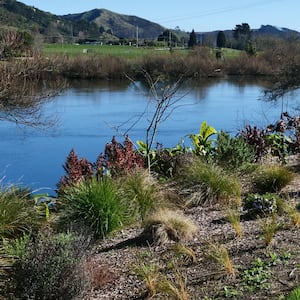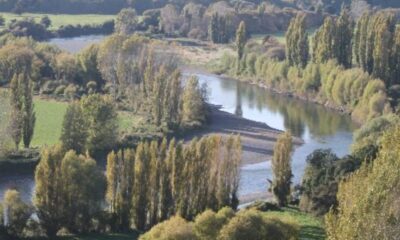World
Waikato River Named Among New Zealand’s Top Drowning Risks

The Waikato River has been identified as one of New Zealand’s most dangerous locations for drowning, with over 120 fatalities recorded since 1980. This alarming statistic has placed the river in the top three drowning “black spots” for 2024, according to data from Water Safety NZ. The river ranks third overall, following the Manukau Harbour and Piha Beach, and is notably the only river on this critical list.
Understanding the Risks
In 2024 alone, the Waikato region experienced 10 drowning fatalities, aligning closely with its ten-year average of 9.9 deaths per year. This results in a per capita rate of 2 deaths per 100,000 people, as reported by Water Safety NZ. All victims from last year were adult men aged 25 or older, with three primary areas being identified as high-risk: the Taupo end of the river, Hamilton City, and Port Waikato.
Esther Hone, Water Safety NZ’s safety and prevention lead, attributed the river’s dangers to its murky waters, hidden debris, and fast-moving currents, which create a “deadly environment” for those unprepared. Hone highlighted that many drownings occur when individuals attempt to rescue others or ignore safety warnings before entering the water. Notably, 43% of fatalities in the river result from trips and falls. “No matter how much we think we’re not going to get in the water, unfortunately, that’s when drownings happen,” Hone stated.
Prevention Efforts and Community Initiatives
A significant risk factor for drowning is the practice of jumping off bridges. Hone cautioned that this activity becomes particularly hazardous after rainfall when water depth, flow, and debris can change unexpectedly. Despite the concerning statistics among adults, initiatives are underway to improve water safety among younger populations.
For instance, Taupiri School has implemented the Water Skills for Life programme, which educates children aged 5 to 13 on essential water safety skills. Principal Judith Gribble emphasized the importance of teaching children how to use life jackets, float safely, and maintain warmth in water. She noted that as summer approaches, the river becomes a popular destination, increasing the need for awareness and safety knowledge.
Gribble pointed out that while children are receiving vital training, parental involvement is crucial. “As much as schools are doing this work, parents need to ensure that their children know and are safe,” she said. For parents who cannot swim, she recommends wearing life jackets or enrolling in water survival classes. “It is not about being embarrassed about the fact that you don’t know how to be safe on the water, but as an adult, you can do something about it,” Gribble added.
Water Safety NZ first published its list of drowning black spots in 2023 as part of the National Drowning Report. The 2024 list has expanded, replacing some high-risk areas such as Auckland’s Princes Wharf and Lake Pupuke with newly identified locations. The Waikato River has joined this list, along with Papanui Point near Raglan, which has been recognized since 2023.
For more information, individuals can visit watersafetynz.org/drowning-insights/drowning-blackspots to access resources and learn more about water safety. As the summer season approaches, awareness of these risks becomes increasingly vital for residents and visitors alike.
-

 World3 months ago
World3 months agoTest Your Knowledge: Take the Herald’s Afternoon Quiz Today
-

 Sports3 months ago
Sports3 months agoPM Faces Backlash from Fans During Netball Trophy Ceremony
-

 Lifestyle3 months ago
Lifestyle3 months agoDunedin Designers Win Top Award at Hokonui Fashion Event
-

 Sports3 months ago
Sports3 months agoLiam Lawson Launches New Era for Racing Bulls with Strong Start
-

 Lifestyle3 months ago
Lifestyle3 months agoDisney Fan Reveals Dress Code Tips for Park Visitors
-

 Health3 months ago
Health3 months agoWalking Faster Offers Major Health Benefits for Older Adults
-

 World3 months ago
World3 months agoCoalition Forms to Preserve Māori Wards in Hawke’s Bay
-

 Politics3 months ago
Politics3 months agoScots Rally with Humor and Music to Protest Trump’s Visit
-

 Top Stories3 months ago
Top Stories3 months agoUK and India Finalize Trade Deal to Boost Economic Ties
-

 Entertainment3 months ago
Entertainment3 months agoExperience the Excitement of ‘Chief of War’ in Oʻahu
-

 World3 months ago
World3 months agoHuntly Begins Water Pipe Flushing to Resolve Brown Water Issue
-

 Science3 months ago
Science3 months agoNew Interactive Map Reveals Wairarapa Valley’s Geological Secrets









